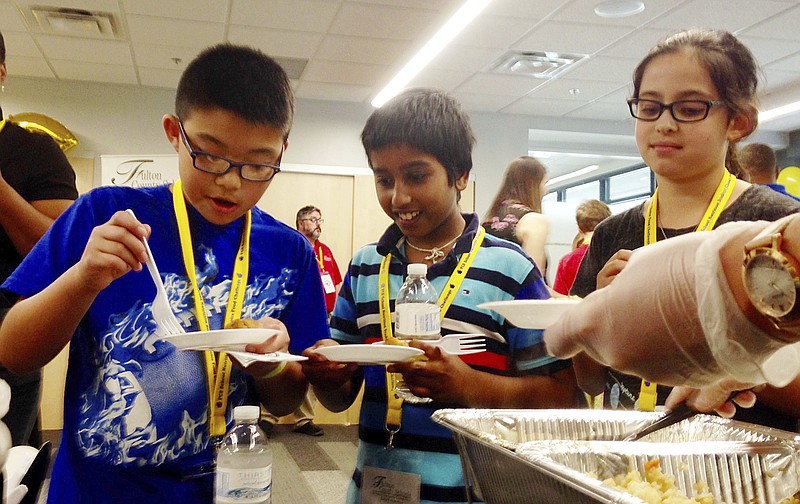ATLANTA (AP) - Georgia schools are continuing efforts to win over picky eaters, using taste tests, chef visits and school gardens to encourage kids to pick up healthier items even as the state's former governor hit the pause button on some stricter nutrition standards for school meals as a top member of the Trump administration.
Department of Agriculture Secretary Sonny Perdue announced this month that the agency will delay planned sodium limits and allow schools to scale back on whole-grain requirements and to reintroduce 1 percent milk instead of just nonfat. The School Nutrition Association, which represents nutrition directors and companies that sell food to schools, applauded the move for giving schools "practical flexibility."
Some Georgia districts, though, have already met the targets and aren't sure whether they should ease up and risk progress with students. As they wait to see final versions of Perdue's proposed changes, nutrition directors already are planning meals for the 2017 school year.
In Georgia's Fulton County, that process starts with dozens of hungry fourth graders sampling potential menu items including baked chicken on top of a whole grain waffle and a "superfood" salad including kale, broccoli and dried cranberries mixed with deep-red vinaigrette. The students then use iPads to rank their favorites.
Eric Zhang, a fourth-grader at a school north of Atlanta, wasn't a big fan of the salad. "It only had vegetables," he explained. But he'd happily eat a veggie eggroll, baked until it became "very crispy" and full of vegetables.
"It was as good as a restaurant," Zhang, 10, said.
Classmate Sophia Ullman, who is nine, ranked the chicken alfredo pasta as her favorite sample.
"It was really cheesy and the pasta was good," she said. "I think it's better than what we have for lunch now."
Fulton County officials hope for exactly that reaction at the students' school in suburban Alpharetta. The school's lunch participation rate is low compared to others in the district, said Alyssia Wright, the district's executive director of nutrition.
"We really want students to like our food," Wright said. "Our number one method for determining what is on our menus is student feedback. We also have to balance that with cost and meeting regulations."
The tougher standards were determined by the Department of Agriculture and began rolling out in 2012. School nutrition organizations and vendors have long argued the regulations had unintended consequences: lowering the number of students who participate in school lunches, raising costs and increasing waste. That all makes nutrition directors' job more difficult, because federal funding is tied to the number of meals served.
Some researchers, though, have found that packaging, presentation and a good sales pitch can make a difference. Nutrition directors surveyed by the Pew Charitable Trusts' Kids' Safe and Healthful Food Projects last year reported better participation rates in districts that gave more food choices, added salad bars and prepared items from scratch rather than buying prepackaged from a vendor.
Directors also said taste tests and other methods of getting student input are among the most effective ways to cut wasted food, as in west Georgia's Carrolltown City School District.
Each month, students at the high school meet Nutrition Director Linette Dodson to taste items, talk about menus and pass on feedback from their peers. Dodson said she "fell into" school nutrition after years as a registered dietitian at a hospital. She saw her patients struggling to manage diabetes and obesity, memories that helped encourage her to pull salt packets from school cafeterias and introduce whole grain items in Carrollton years before the federal government required it.
"If we can help these kids avoid those health issues, it's worthwhile," she said. "But we have to do it in a way that they're excited. You can't present a bland menu. Good flavor and variety has to be the foundation."
Students who have helped plan meals said the reaction to healthier items is positive overall. Some students still toss fresh fruit or vegetables, said 17-year-old junior Kirby Criswell. But he said main entrees and a recently added "bistro cart" selling affordable smoothies and whole-grain doughnuts are well-liked.
"Finding a way to get doughnuts in that are under the health requirements - that was pretty impressive," Criswell said. "And it's a good doughnut too!"
